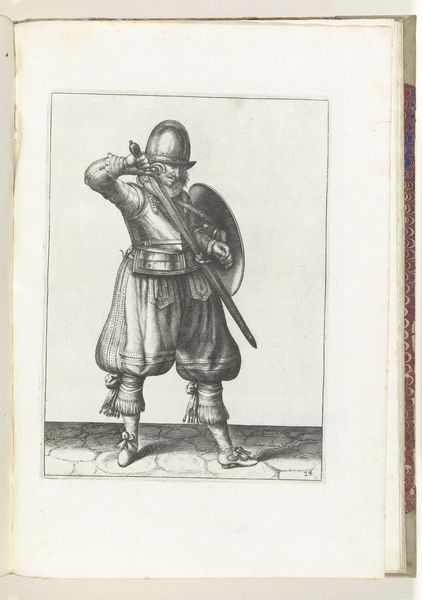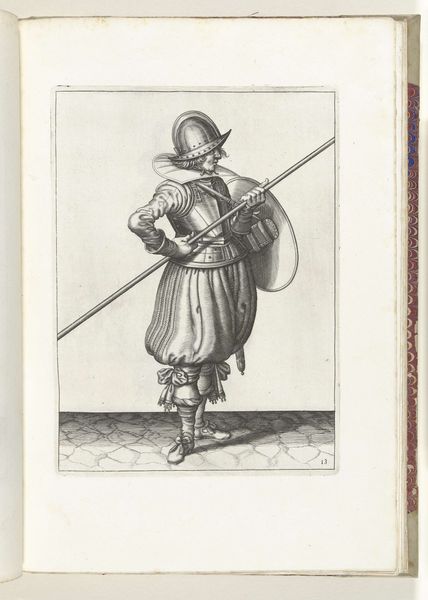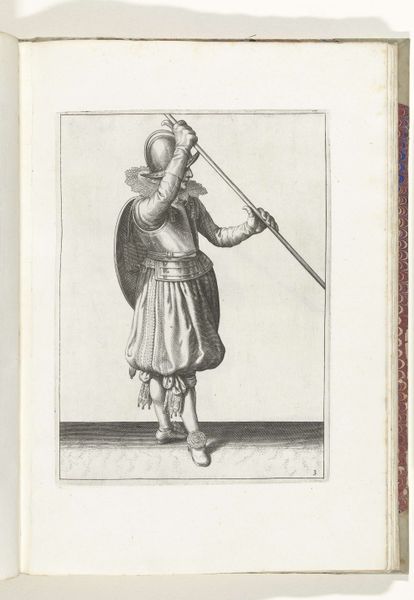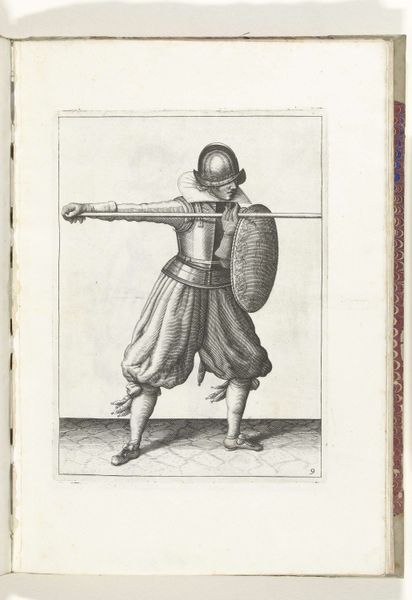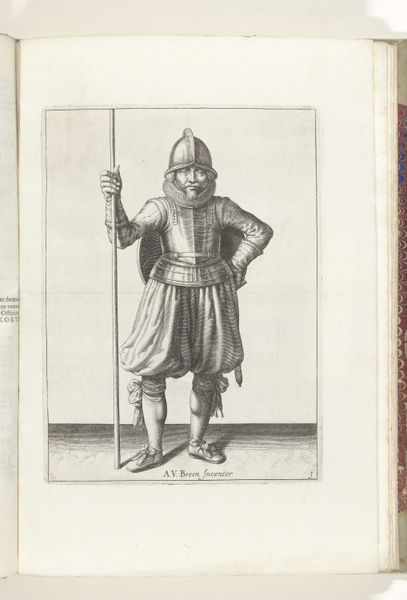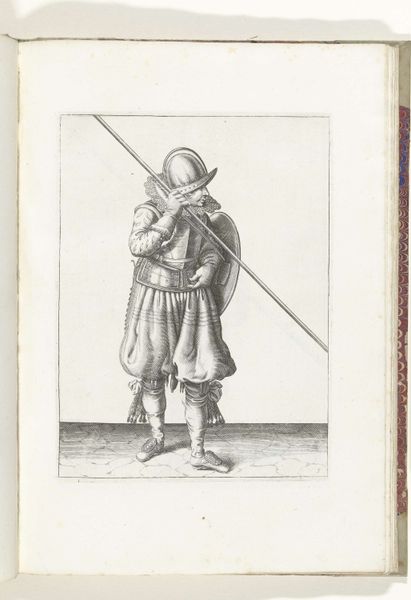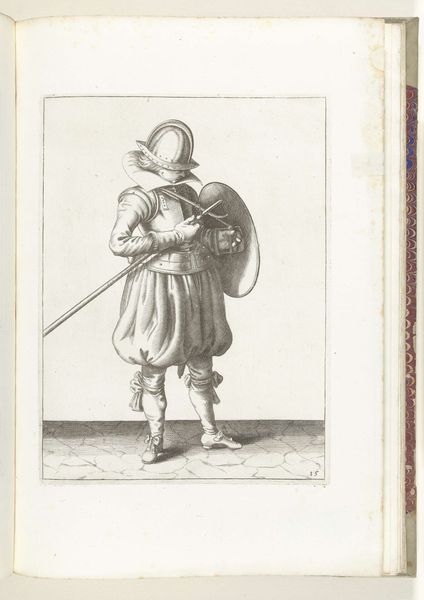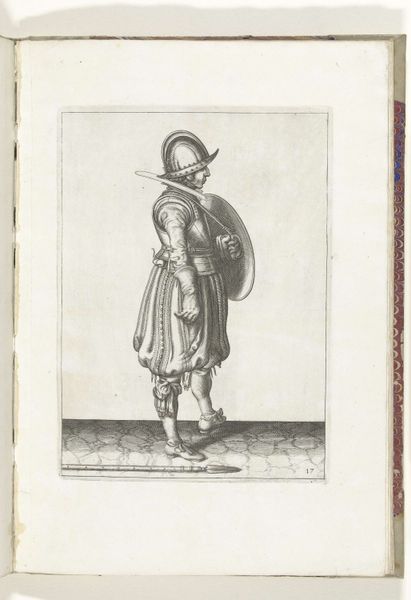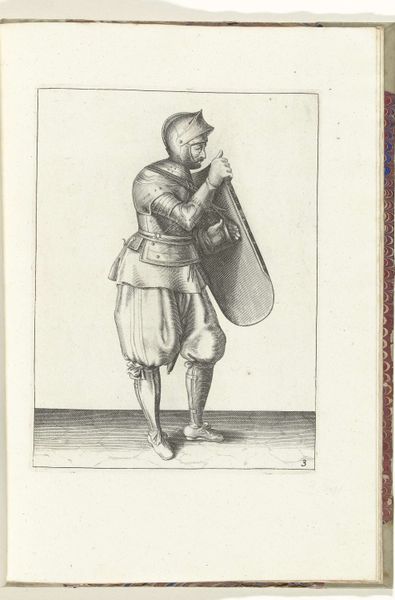
De exercitie met schild en spies: de soldaat brengt de spies met twee handen weer in positie (nr. 29), 1618 1616 - 1618
0:00
0:00
#
toned paper
#
light pencil work
#
weapon
#
pen sketch
#
personal sketchbook
#
ink drawing experimentation
#
pen-ink sketch
#
sketchbook drawing
#
watercolour illustration
#
storyboard and sketchbook work
#
sketchbook art
Dimensions: height 260 mm, width 190 mm
Copyright: Rijks Museum: Open Domain
Editor: So, here we have "De exercitie met schild en spies: de soldaat brengt de spies met twee handen weer in positie (nr. 29)," made around 1616-1618 by Adam van Breen. It appears to be a pen and ink sketch of a soldier with a shield and spear. The figure is striking a pose mid-maneuver. What historical narrative do you see in this work? Curator: This piece, beyond just depicting a soldier, really speaks to the militarization of early modern Europe. We need to consider the Eighty Years' War as a backdrop – a struggle for Dutch independence from Spain. The very act of meticulously depicting this soldier suggests a preoccupation with order and control. Do you see any clues here about social hierarchies of the time? Editor: I see the way he's carefully dressed and armed suggests that this piece is more than just a simple sketch of military life. It presents an elevated ideal. What kind of relationship can we explore with gender, looking at weaponry of the time? Curator: Precisely! While warfare is often seen as a masculine domain, remember women were also deeply affected, often left vulnerable by these conflicts or sometimes even participating directly, disguised as men, facing societal disapproval if discovered. Examining these works can offer glimpses into how gender roles were both reinforced and transgressed during times of conflict. Can you envision this as a challenge of traditional male identity and role in wars? Editor: I can. This exploration makes me appreciate the piece in a completely new light. I didn't consider how images like this might perpetuate or challenge prevailing notions of identity. Curator: Exactly! It’s in teasing out these complexities that art history becomes a tool for understanding broader societal power structures. Hopefully this piece shows us the importance of critically assessing seemingly straightforward historical images for their layered social and political meanings. Editor: This has certainly deepened my appreciation, thinking about it within the wider spectrum of historical context.
Comments
No comments
Be the first to comment and join the conversation on the ultimate creative platform.
